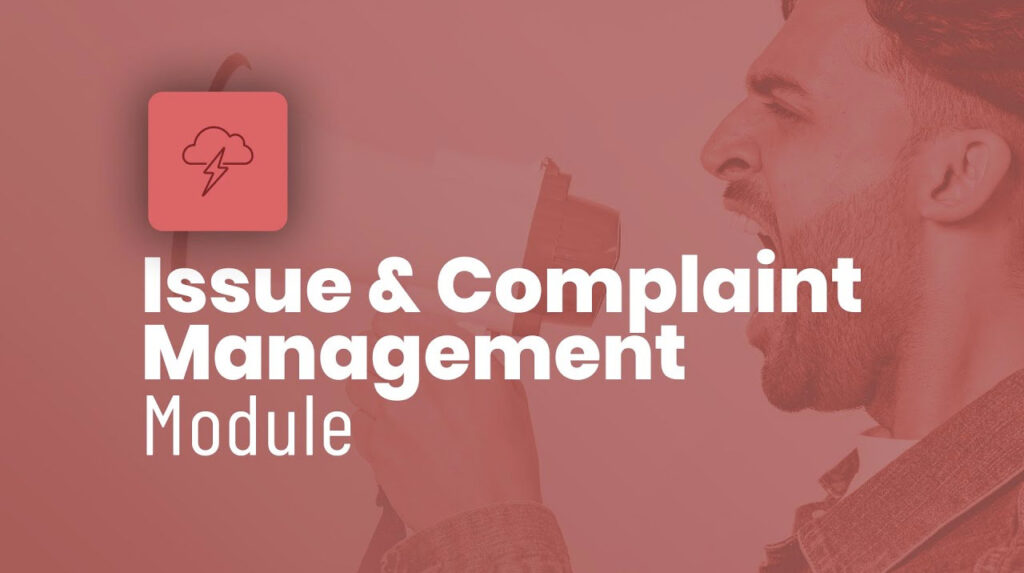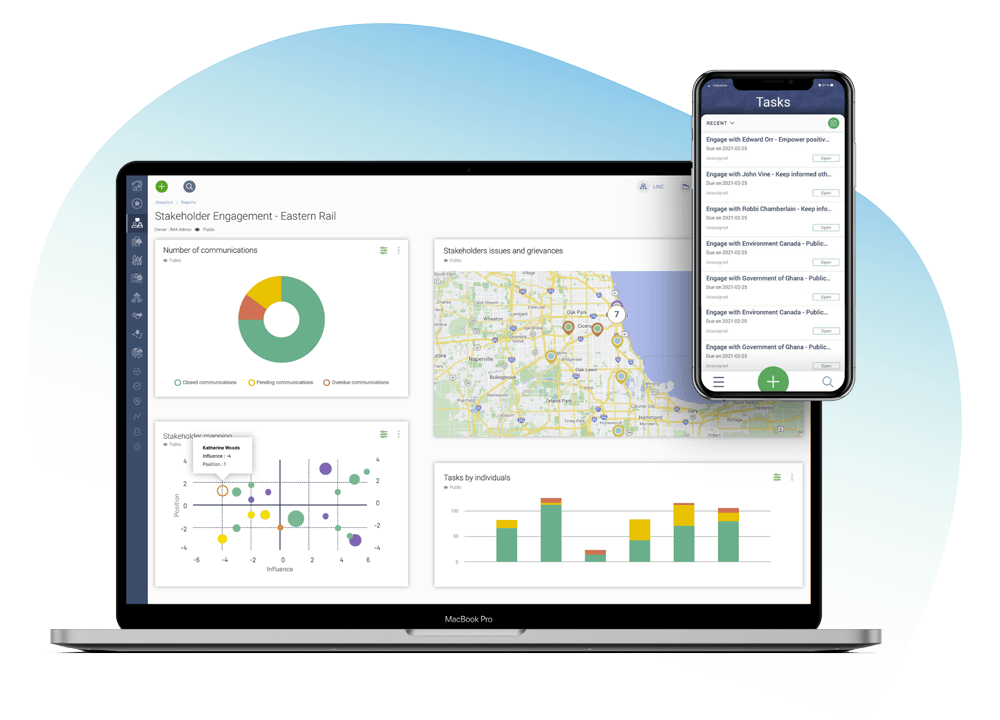Understanding and mastering the art of stakeholder engagement is a critical facet of effective project management. From policy making in the health sector to community involvement in a renewable siting initiative, using best practices in stakeholder engagement can enhances project alignment, minimizes risks, improves communication, and fosters support from those with a vested interest in the project’s success. Ultimately, effective stakeholder engagement contributes to more successful project outcomes and long-term organizational success.
The journey toward successful stakeholder engagement demands a combination of interpersonal skills and the integration of technological tools. While interpersonal skills build trust, facilitate communication, and resolve conflicts, technological tools empower professionals to manage and analyze stakeholder data, streamline communication, and adapt to the evolving landscape of stakeholder engagement.
Identify your goals
A clear and well-defined set of project goals is a key driver in identifying and engaging with the right stakeholders. Clearly defining project milestones and objectives provides a roadmap for stakeholder engagement efforts.
Begin by clearly defining the objectives and expected outcomes of the project. What do you aim to achieve, and what are the project’s key deliverables? What is included within the project’s purview, and what falls outside it? Clarity here ensures you can pinpoint stakeholders directly affected by or interested in the project’s scope.
Once you know what a successful project will look like, you can begin identifying stakeholders who are directly impacted by the project’s outcomes. These could include neighbouring communities, landowners, elected officials, governmental bodies, environmental organizations, NGOs, or advocacy groups.
Understand your stakeholders
Now that stakeholder groups have been identified; the next step would be to get to know them better.
Stakeholders are not monolithic; they come from diverse backgrounds, possess varying levels of influence, and harbour distinct expectations. Therefore, understanding stakeholders is the initial and fundamental step towards building positive and constructive relationships.
Assess the alignment between each stakeholder group and the project goals. Which stakeholders are aligned with project objectives, and which may have conflicting interests or concerns? Prioritize stakeholders based on their level of alignment with project goals. Those with higher alignment and greater impact on project success should receive more focused engagement efforts.
Dive into the specific needs and expectations of each stakeholder group. Understand their motivations, concerns, and objectives concerning the project. Some stakeholders may prioritize financial gains, while others may focus on environmental impact or social outcomes.
Gauge the level of influence each stakeholder wields within their respective spheres. Some stakeholders may have direct decision-making power, while others may have indirect influence or be dependent on other influential parties.
Recognize cultural and societal factors that may influence stakeholder perspectives and behaviours. Be sensitive to cultural norms, traditions, and values that can impact communication and engagement approaches.
Finally, use surveys, interviews, and feedback mechanisms to collect data directly from stakeholders. Analyze this data to gain insights into their viewpoints and preferences. Employ data analytics tools to uncover trends and patterns in stakeholder interactions and sentiment. This data-driven approach can provide valuable insights for engagement strategies.
Build trust and credibility
Trust is the cornerstone of successful stakeholder engagement. Without trust, it’s challenging to establish productive and enduring relationships with stakeholders. A lack of trust can also mean increase stakeholder risk and jeopardize the outcomes of project. Building trust and credibility is an ongoing process that requires care, consistency, and a genuine commitment to transparency and integrity.
Establish and maintain open channels of communication with stakeholders. Be honest and transparent about project goals, challenges, and potential impacts, even when the news is unfavourable. Keep them informed about project progress, milestones, and any changes that may affect them. Avoid surprises and ensure that stakeholders are never left in the dark.
Uphold the highest ethical standards in all interactions. Demonstrate a commitment to fairness, respect, and ethical behaviour. Avoid conflicts of interest or situations that could compromise trust. Deliver on promises and commitments made to stakeholders. When you say you will do something, follow through.
Make yourself and your team accessible to stakeholders. Respond promptly to inquiries and requests for information. Being approachable fosters a sense of partnership. When stakeholders raise concerns or issues, take them seriously. Investigate and address their concerns promptly and fairly.

Learn about how our Issue and Complaint Management Module can help you and our organization address stakeholders’ concerns before they escalate. Safeguard your business’ reputation by ensuring that teams always follow up on commitments, promptly address grievances, and avoid being unprepared.
Tailor your approach
One size does not fit all in stakeholder engagement. Each stakeholder group brings unique perspectives, interests, and expectations to the table. To maximize the effectiveness of your engagement efforts, it’s crucial to tailor your approach to meet each group’s specific needs and preferences and create an effective stakeholder engagement plan.
Identify the communication channels preferred by each group. Some may prefer face-to-face meetings, while others may prefer email, social media, SMS or community forums. Utilize the channels that your stakeholders are most comfortable with.
Craft messages that resonate with each stakeholder group. Highlight the aspects of the project that are most relevant to them. Use language and terminology that they can relate to.
Offer a variety of consultation activities that cater to different stakeholder preferences. This might include public hearings, workshops, surveys, or one-on-one consultations. However, be mindful of the timing. Consider stakeholders’ availability and schedules to ensure their ability to participate.
Use active listening and communication techniques
Effective stakeholder engagement relies on a dynamic two-way communication process. By combining customized communication and active listening, you create a holistic engagement strategy that recognizes stakeholders as active participants in the project.
Engage in active listening to gain a deep understanding of the concerns and priorities of each stakeholder group. Actively seek feedback, opinions, and insights. Show empathy by acknowledging stakeholders’ perspectives and concerns. Demonstrate that their input is valued and will influence decision-making.
Resolve conflicts fairly
Conflicts and disagreements are bound to arise in stakeholder engagement. How these conflicts are handled can significantly impact the project’s success and stakeholder relationships. When conflicts are addressed equitably, stakeholders are more likely to perceive the engagement process as transparent and just, strengthening trust and collaboration.
Establishing an environment where stakeholders feel safe expressing their concerns and grievances is necessary. This includes ensuring confidentiality when necessary. Facilitate open and inclusive discussions that allow all parties to voice their perspectives and concerns. Encourage active listening and respectful dialogue.
Implement a solid grievance mechanism. A good grievance management process should always include an official grievance portal that allows stakeholders to enter their complaints anonymously. Making sure that grievances are delt with in time and that commitments made are followed through can help organization avoid unnecessary delays and conflicts.
Continuously monitor interactions and communication channels to identify signs of conflicts or disputes. Early detection allows for timely intervention. When a conflict inevitably surfaces, acknowledge the concerns of all parties involved. Recognition validates their perspectives and lays the groundwork for constructive resolution.
Strive for consensus whenever possible. Collaboratively develop solutions that address the concerns and needs of all parties involved. Formalize agreements in written form to ensure clarity and have a reference point for all stakeholders.
Depending on the nature of the conflict, seek input from experts or specialists who can provide valuable insights and guidance for resolution. In some cases, consider engaging a neutral third party or mediator to facilitate discussions. A mediator can help ensure fairness and objectivity in the resolution process.

Learn more about how Borealis stakeholder management software supports stakeholder engagement best practices.





